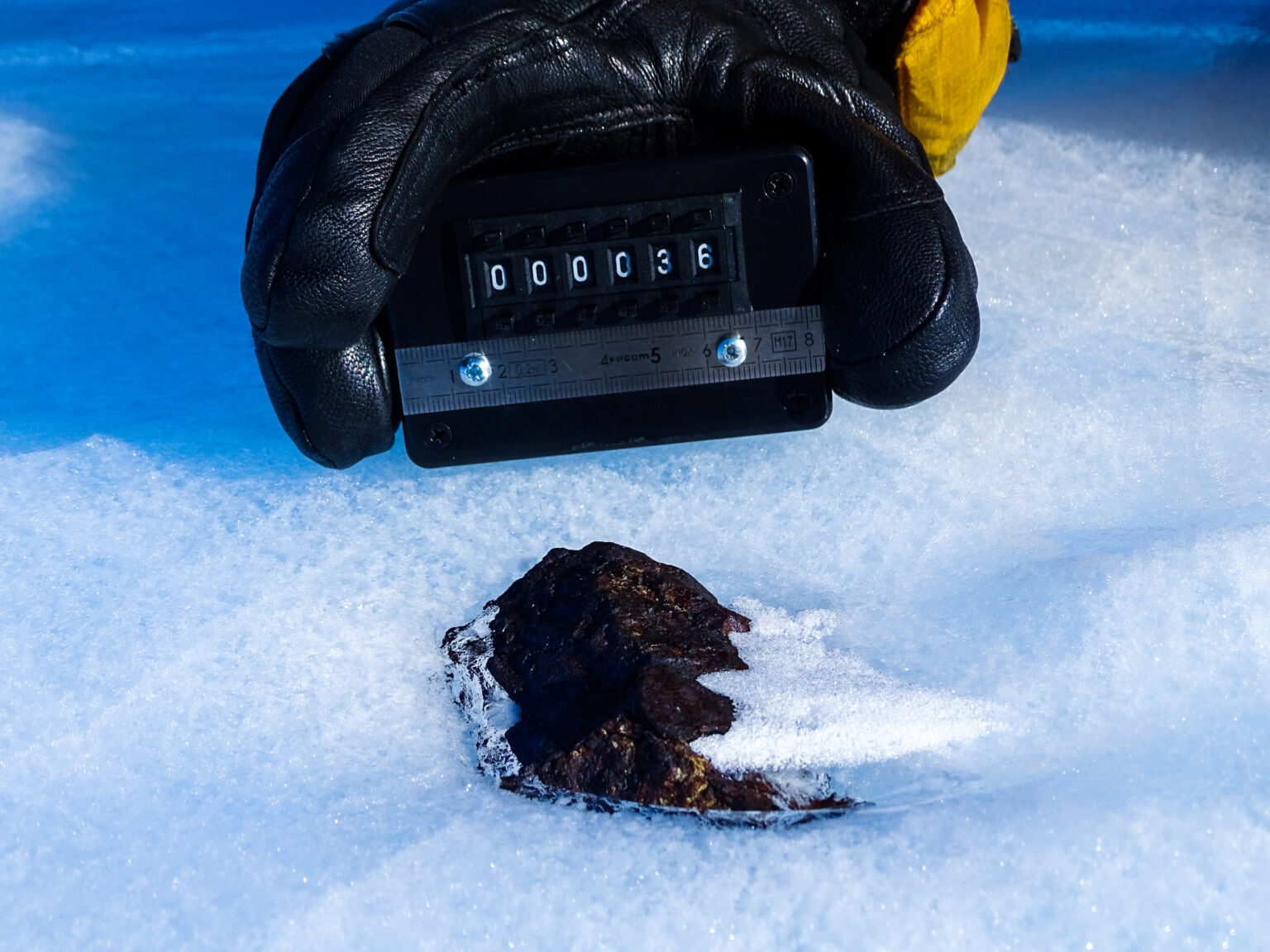Global climate change threatens the melting of Antarctic glaciers. And this, in turn, can lead to the fact that meteorites that are in their thickness can simply get lost and drown in the ocean.

How is climate change related to meteorites?
A team of researchers from Switzerland and Belgium used artificial intelligence to analyze satellite images of Antarctica and found out an amazing thing. It turned out that for every tenth degree of increase in global air temperature, an average of almost 9,000 meteorites disappear from the surface of the ice sheet. This loss has serious consequences, as meteorites are unique samples of extraterrestrial bodies that provide insight into the origin of life on Earth and the formation of the Moon.
Unlike the rest of our planet’s surface, those meteorites that fall in Antarctica remain intact in its curve for millions of years. However, by 2050, of the 300-800 thousand meteorites stored on the icy continent, about a quarter may disappear without a trace. And by the end of the century, this figure may grow to three quarters.
Harry Zekollari was one of the leaders of the study published in the journal Nature Climate Change, working under the supervision of Professor Daniel Farinotti in the Laboratory of Hydraulics, Hydrology and Glaciology at the Swiss Higher Technical School Zurich (ETH Zurich). Zekollari and study co-author Veronica Tollenaar from the Université Libre de Bruxelles show that warming leads to the loss of about 5,000 meteorites per year, which is five times the effort to collect Antarctic meteorites.
Meteorites are time capsules of the Universe
Zekollari, now an associate professor of glaciology at the Vrije Universiteit Brussel, calls for large-scale international efforts to preserve the scientific value of meteorites: “We need to accelerate and intensify efforts to recover Antarctic meteorites. The loss of Antarctic meteorites is much like the loss of data that scientists glean from ice cores collected from vanishing glaciers—once they disappear, so do some of the secrets of the universe.”
Meteorites are fragments from space that provide unique information about our Solar System. Antarctica is the most meteorite-rich place, and today about 60 percent of all meteorites ever found on Earth have been collected from the surface of the Antarctic ice sheet.
How are meteorites lost?
The current of the ice sheet concentrates space rocks in the so-called meteorite accumulation zones, where their dark crust makes them easy to detect. In addition to the intensification of recovery operations, there is potential to increase the effectiveness of meteorite recovery missions in the short term. This potential relies mainly on data-based analysis to identify unexplored meteorite impact zones and map areas exposing blue ice where meteorites are often found.
Because of their dark color, meteorites are very hot compared to the surrounding ice. When this heat is transferred from them to the ice, it can warm it up and eventually cause local melting of the ice, which will lead to the rocks sinking under the surface of the ice sheet. As soon as they get under the ice sheet, even to a small depth, they are no longer detectable.
Scientists conclude that in the long term, the only way to preserve the majority of undiscovered Antarctic meteorites is to rapidly reduce greenhouse gas emissions.
According to phys.org
Follow us on Twitter to get the most interesting space news in time
https://twitter.com/ust_magazine


